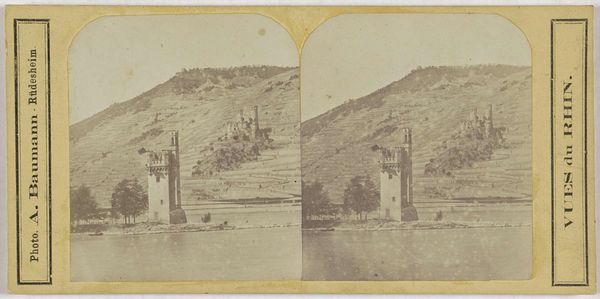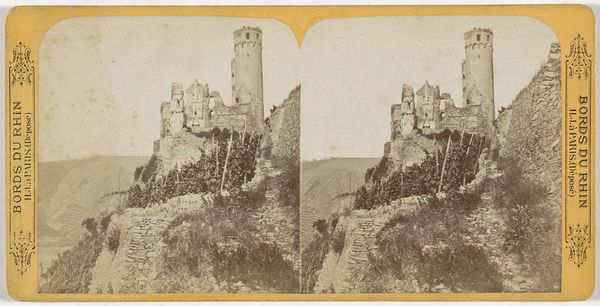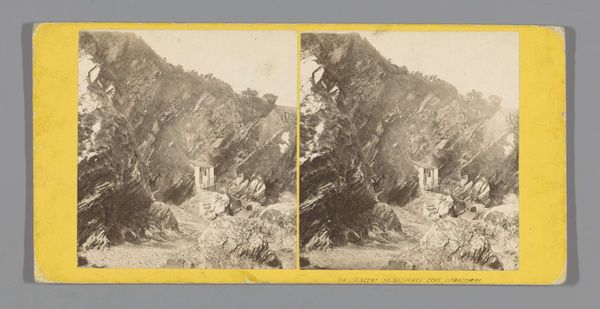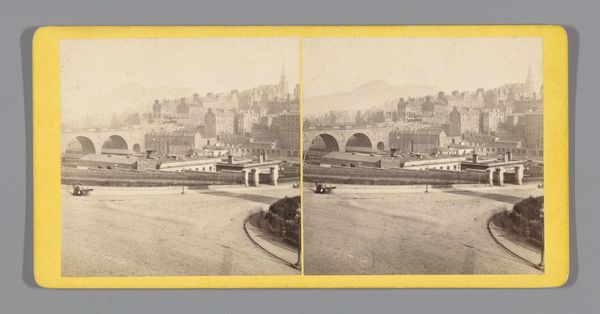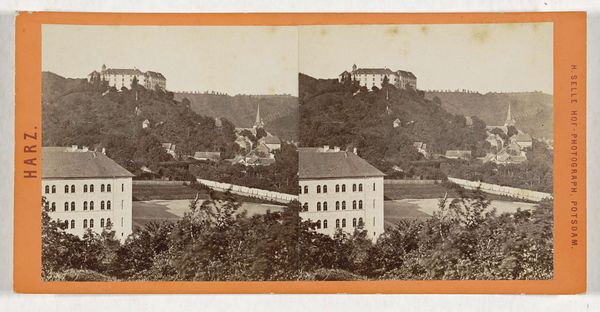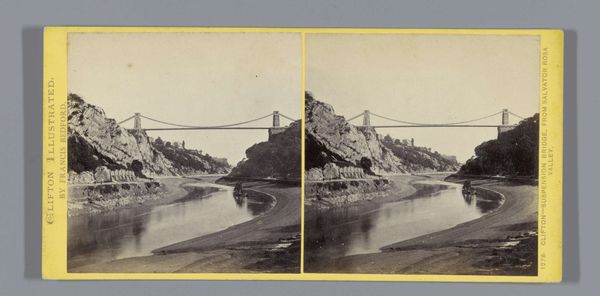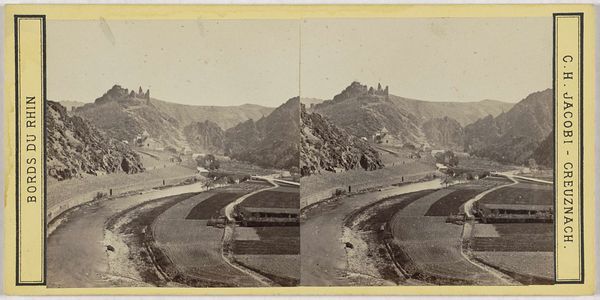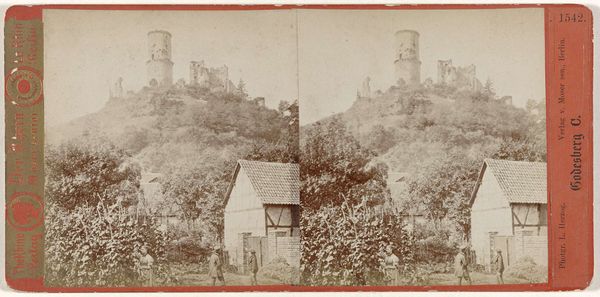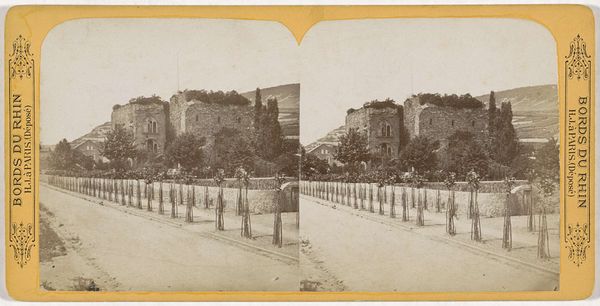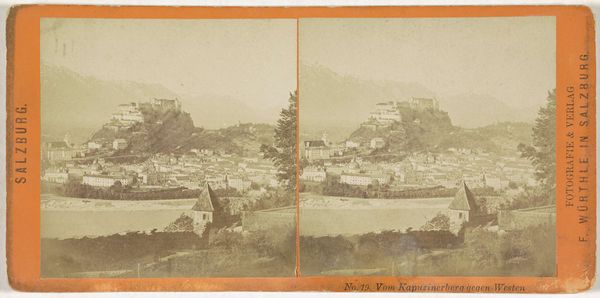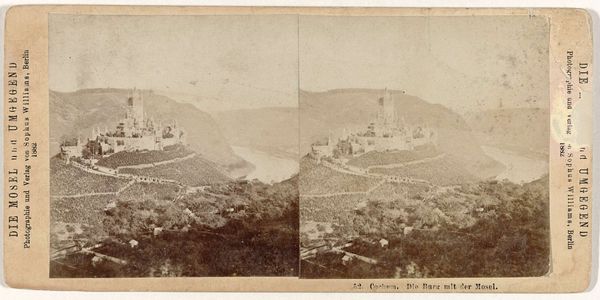
Dimensions: height 85 mm, width 170 mm
Copyright: Rijks Museum: Open Domain
This photograph by Hermann Manz presents a stereoscopic view of a landscape featuring a castle atop a hill, captured with a muted palette. The composition is divided into three distinct horizontal layers: the river in the foreground, a band of trees and a road in the middle ground, and the elevated castle against the sky. Manz employs the stereoscopic format, using near-identical images to mimic depth. This was a popular technique at the time for creating an illusion of three-dimensionality, inviting viewers into a virtual space that mirrors reality, yet also abstracts it through mechanical reproduction. The use of a sepia tone flattens the perspective, reducing the scene to a study in tonal values rather than a burst of colors. The texture of the photograph itself, with its slight graininess, adds another layer of abstraction, reminding us of the mediation inherent in photographic representation. Consider how the structure of the photograph is less about capturing a specific scene than about exploring the possibilities of photographic technology. The image functions as an exercise in perception.
Comments
No comments
Be the first to comment and join the conversation on the ultimate creative platform.
